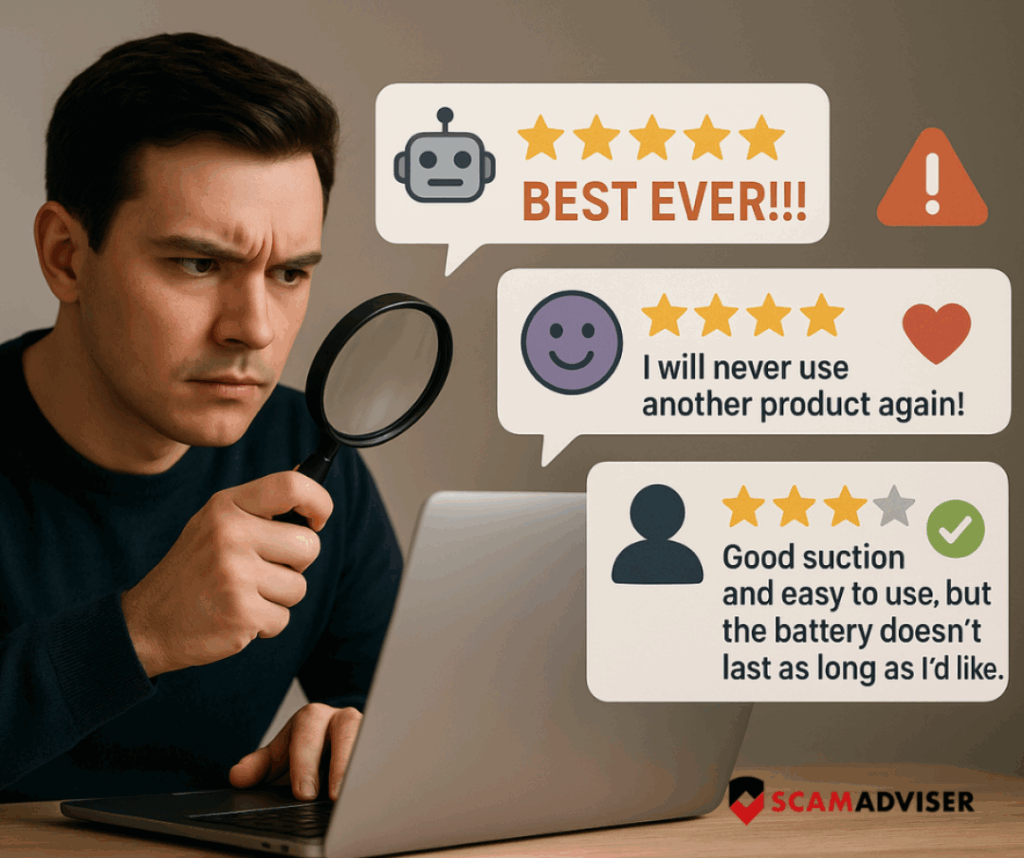Reviews are one of the most powerful tools in online shopping. They act as social proof — the digital version of word-of-mouth. A handful of glowing five-star reviews might convince you to hit “Buy Now” instantly, while a harsh one-star rant might scare you away. For many shoppers, reviews are the deciding factor in whether to trust a brand.
That’s exactly why fake reviews are such a big problem. They don’t just waste your money — they create a false picture of trust and credibility. And here’s the kicker: fake reviews aren’t just written by a few random trolls. They’re part of a growing multi-million-dollar industry.
The Big Business of Fake Reviews
Businesses know that reviews can make or break their sales. That’s why some pay for fake feedback to boost ratings and trick customers into trusting them.
Whole companies exist just to sell fake reviews. Prices vary depending on the platform and the “quality” of the account posting them. For example:
- Google reviews: 5 for $30, 100 for $500
- TrustPilot reviews: 5 for $45, 20 for $160
- Instagram followers: 500 for $8, 10,000 for $120
Some sellers use bots or hacked accounts. Others charge more for reviews written from “legit-looking” profiles with a review history. Either way, the result is the same — a fake online reputation that misleads customers.
Signs of Fake Reviews
Spotting fake reviews can feel tricky, but once you know the red flags, they’re easier to catch. Here are the top signs to watch out for:
1. Overly Perfect Reviews
If reviews sound like they were written by a PR team, be cautious. Real customers usually share both good and bad points.
Fake: “This is the most AMAZING blender in history! My life has changed forever!”
Real: “Blends well, but it’s louder than I expected.”
2. Copy-Paste Jobs
If multiple reviews use the exact same wording, it’s a sign of fakes.
Example: Five reviews in a row: “Left my skin glowing, I will definitely buy again!”
3. Too Many “I” and “Me” Statements
Fake reviewers often overuse personal pronouns to sound authentic.
Example: “I just love how this saved me. I can’t believe I found this. I will never use another product again!”
4. Scene-Setting Instead of Details
Real reviews mention specifics. Fake ones paint vague pictures.
Real: “Battery lasted 3 hours, but the charging case helped.”
5. Suspicious Reviewer Profiles
Click on the reviewer’s profile. New accounts, only 5-star reviews, or stolen profile photos are all red flags.
6. Sudden Spikes in Reviews
If a product gets 50 glowing reviews overnight, something’s off. Genuine reviews usually build up gradually.
7. Verified Purchases Are Safer
On platforms like Amazon, “Verified Purchase” means the reviewer actually bought the item. These reviews carry more weight, though even they can be faked.
8. Language Clues
Look for odd grammar, unnatural phrases, or too many superlatives like “life-changing” or “the greatest in history.”
9. Contact the Reviewer (If Possible)
On some platforms, you can reach out to reviewers. Genuine people usually reply — fake reviewers almost never do.
How Recovery Scammers Bank on Fake Reviews
Recovery scammers know fear sells. After someone falls for a scam, these crooks pose as the helpful cavalry — claiming they recovered lost money for previous victims. Then they flood social media, comments, and review sites with stories like: “I was scammed — then X Recovery helped me get my money back!” These posts are engineered to do three things: create urgency, build trust by storytelling, and push you toward their paid “service.”
You’ll spot their tactics in the wild:
- Social-media swarm: dozens of short comments on unrelated posts claiming a miracle recovery and a link to the recovery service.
- Cross-platform promotion: the same “success” message pasted to Instagram, Facebook, YouTube comments, and even replies under unrelated influencers’ posts.
- Fake testimonial farms: networks of accounts that all praise the same recovery company within days or weeks of each other.
- Review-site abuse: they’ll cram TrustPilot, Google, or other platforms with 5-star “I got my money back” reviews — sometimes even mentioning neutral or unrelated sites (e.g., a recovery service name appearing in ScamAdviser or product reviews) to create the illusion of legitimacy.
Takeaway: Don’t rely only on glowing five-star reviews. Trust your gut, look for specifics, and double-check with ScamAdviser to protect yourself
Source: https://www.scamadviser.com/articles/how-to-spot-fake-reviews-online-and-protect-yourself-in-2025

